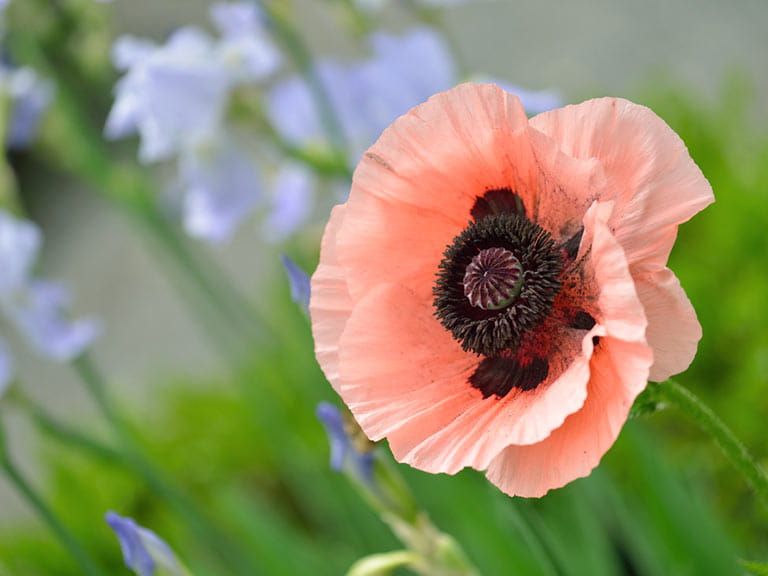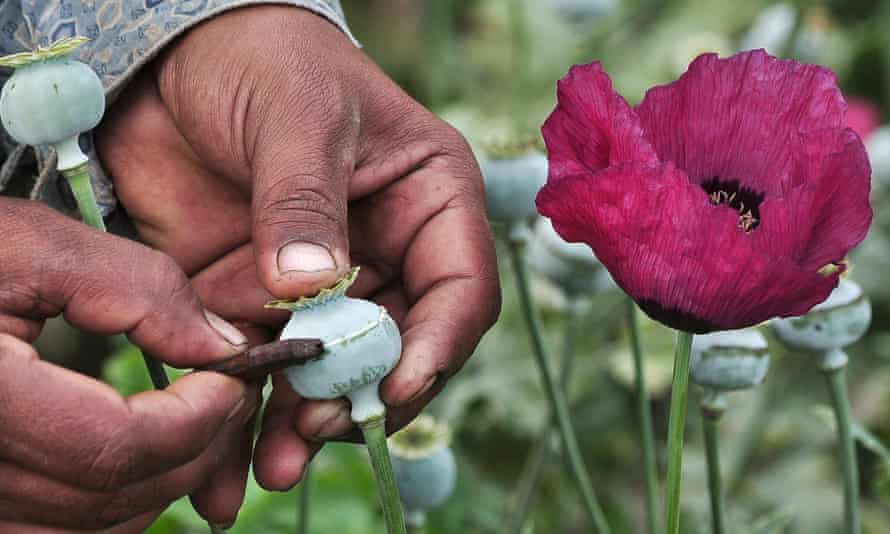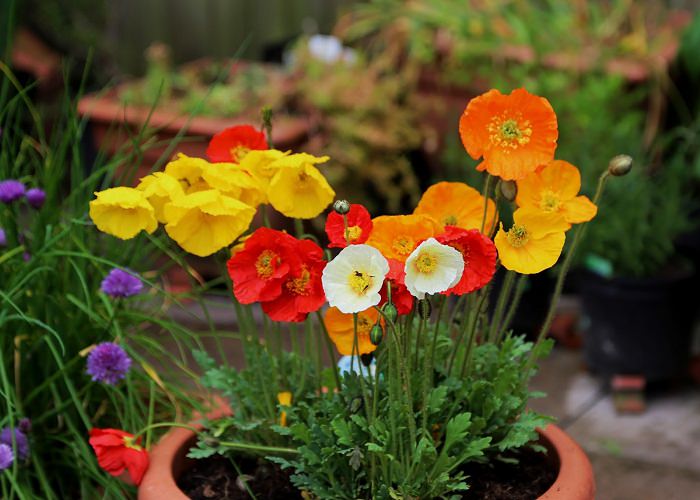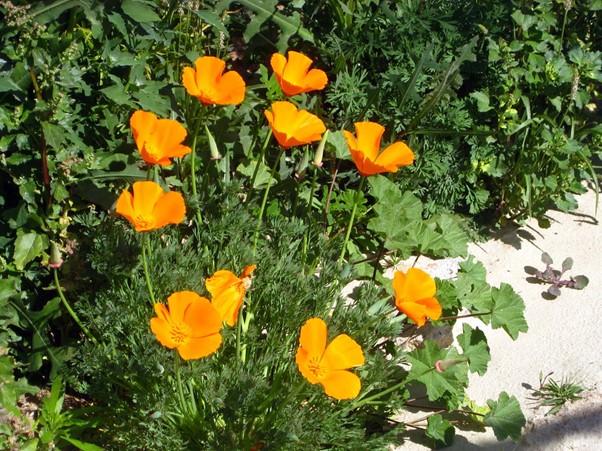Poppies fulfill the love for flowers as well as colors. There are multiple variations, ranging in colors, yet they are easy to plant in a garden with exemplary efforts and proper knowledge.
People grow them at times to make their gardens more colorful and prettier. They take up the empty spaces in lawns or gardens and fill them with beauty. On top of all this, these plants bloom every year and can last for years if taken care of properly.
These plants can be grown in many ways. Some simplest ways can be either sowing a single colored seed for a field or lawn or garden with a bold look. Otherwise, one can sow multiple colored poppy seeds and have a colorful, friendly-looking, sweet garden.
Growing poppies from the seeds is not an impossible task, but instead, a very doable one. Here is a guide on how to plant poppies and some tips for growing them. Before beginning, however, here are a few things to know about poppies.
Types of Poppies

As mentioned above, there are many types of poppies out there. To be precise, there are around more than a hundred (120) different types of poppies. Among them, some plants bloom annually, some twice in a single year, and some bloom all year long.
Similarly, some have a life cycle of one season (they die the same year they are sown), some have a biennial life cycle, meaning they live up to two seasons or two years, and some have a life cycle that spans over more than one year (2 to 3 or even four years).
Field Poppy

The easiest to plant and take care of or grow from a seed, field poppies are also known as Flanders in many places. These plants’ flowers have a great value as symbolism for memories.
Remembering a fallen soldier, those who died in the First World War is symbolized by these poppies. But, unfortunately, they have a life cycle of one year, which means they die almost after one season within the same year.
Oriental Poppy

Many people would like to have poppies that last longer than a single year, at the very least. For such people, biennial poppies are a choice to go for. In the biennial category, oriental poppy plants are one of the most beautiful ones out there.
These have flowers that are comparatively bigger and look beautiful. There are some Japanese variants, which come in some royal and exquisite colors like Golden and Shades of Purple.
Narcotic Poppy

Some poppies can be grown for cooking-related purposes. In these plants, the seeds are eaten and even used to provide flavors to many dishes. The seeds can also install extra crunchiness to the bread for a pleasant experience while having each bite.
However, one should never forget that some of this category’s plants can be poisonous and have effects similar to some harmful drugs. Therefore, consuming any particular part of it should be avoided or researched at the very least.
Which Season to Sow the Seeds In?

When one should sow the seeds of their poppy plants, the question must come across the mind of anyone interested in planting them. The most straightforward answer would be to plant them in a lawn or a garden during the autumn season or spring season. These are some of the best seasons for sowing them. However, that does not mean they cannot be planted at any other time.
Some people plant their seeds earlier, around April, between March and late May. However, even in that case, the plant will show the best growth only during summer in most cases. This means one will have to be patient till summers for any visible healthy growth in their plants and take care of them throughout and after summer.

Those interested in getting more flowers from their plants should think of planting their seeds during the months of end July, August, and September. Early to mid-October works just fine as well for the same purpose.
Finally, one can take some advice from the local nursery for better guidance in this region about the variety one plans to plant and grow. According to the specific plant, there is enough information that can be researched through various sources.
Sowing the Seeds
Now that some things about poppy’s types are clear, the next thing to know is “How” to plant the seeds or sow them. Before beginning the process, one should figure out the area of their lawn or garden. Then, how many seeds will be needed can be calculated according to it?
After that, the type/s of poppy that one is going to plant should be clear. This pre-planning helps construct a better garden, is organized, and looks more colourful, beautiful, and elegant.
- Classic style, painted white
- Made out of tropical acacia hardwood
- Easy assembly, hardware and instructions included
- Refer User Manual for product Assembly
Choose A Spot
The spot where one is going to plant the poppy should get plenty of sunlight. These and almost all other plants need plenty of sun for maximum hours as a sapling and young plants to grow.
Make sure no shade covers the area in the afternoon or before the evening for too long a time. The area that is under shade will show slower growth and comparatively unhealthy plants over time.
Then, make sure there is a sound drainage system, or simply the drainage in the lawn is good. The seeds will die if they remain drowned for long.
Rake
Raking the area where the seeds are to be sown will ensure healthier soil. Remove the wild weeds and such from the soil. This will make sure the seeds are not deprived of nutrients because of such reasons. Raking is a common practice in gardening and is beneficial and appreciated.
Sprinkle the Seeds.

After the previous two steps, the soil will be ready for the seeds to welcome. So, one can now take as many seeds as they can in their hands and sprinkle them all over the garden’s area where they are supposed to grow. This throwing of seeds will eventually result in a natural appearance. Otherwise, the seeds can be dropped in a linear pattern or however one decides to.
Water and Waiting
The seeds will need plenty of watering at regular intervals. The plants can be watered every day till the seeds sprout, and germination occurs. Just make sure the seeds do not drown or the soil becomes too wet. The seeds need moist soil.
Once the plants germinate, the watering can be done every second or third day, and as they grow and the roots dig deeper, they can be watered once or twice a week. The plants should be given water in the morning, as early as possible, to penetrate deeper into the soil, and the leaves will dry out earlier.
The seeds generally take somewhere ranging from 7 to 30 days to germinate. The germination period is dependent on the health of the soil, its nutritional value, condition, temperature, and the amount and quality of sunlight available to the seeds.
Thin Them Out

When the plants are tall enough and can be trimmed, some weaker seedlings should be pulled out. Thinning the poppies making a 25cm to 35cm gap between each plan approximately is an ideal plan. Thinning helps eliminate the seedling that would have taken the soil’s nutrition but not shown much growth and instead made the field look messier.
Buy Plants
If someone thinks they have missed their chance to plant the seeds and cannot have their poppy garden now, they are wrong. Many oriental poppies can be bought from the market. They are available as mature saplings and plants and can be planted directly into the soil.
Tips for Growing Poppies
Most of the other things that one needs to know, like the types of poppies and seasons they can be grown, have now been discussed. The process of producing the poppy has also been briefly discussed, so the only thing left is to talk about some “Tips for growing” poppies.

- The plants, once rooted enough, should be watered regularly when the soil is dry enough again. However, please do not overdo it, as a higher water concentration can damage the plants. When water regularly, the best way to know when to water is to look for dry spells. If the soil gets dry after two days, then water accordingly.
- Pluck the flowers that are discolored, dead, or faded in appearance. This is like trimming. In this case, the nutrition that would have gone into the faded flower’s maintenance will be diverted by the plant to newer buds or other healthier flowers. This, in turn, results in brighter, more prominent, denser, and prettier flowers.
- For cooking or culinary related to the poppies’ uses, the seeds need to be harvested. So, the best time to harvest the pods is to look for the colour of the pods, which should be light brown.
When the pods are light brown, one should pluck them and then put them up to dry. The drying should be done for around 7 to 14 days. After that, pods can be opened, and seeds can be taken out and stored in a glass jar. The seeds can stay preserved for up to two years.
- After an annual variety of poppy plantation has given seed pods, and they should be pulled out and used to make compost. The whole soil should be provided with extra compost if possible.
- In the perennial and the other (biennial) poppy variants, once the flowers have bloomed and the seed pods have matured and been harvested, the plants need to be trimmed down. The foliage needs to be cut down, best done during autumn.
- Thinning out of the plantation is necessary, as it reduces the crowd. These most exact words will give more space for the plants and the soil to breathe. There is more nutrition available to the remaining plants, which means healthier growth. The controlled plantation also looks prettier.
- If the plants show less growth, get the soil checked by a professional or in a nursery if possible. Otherwise, pay attention to the drainage, the sunlight, and do not forget to add some fertilizers to the soil.
Poppies are naturally beautiful. Their colour variations are a significant reason for their fame and preference. These plants can make any lawn or garden, with the dullest of looks, merrier. With proper, timely care and affection, the flowers will bloom as any can be.


